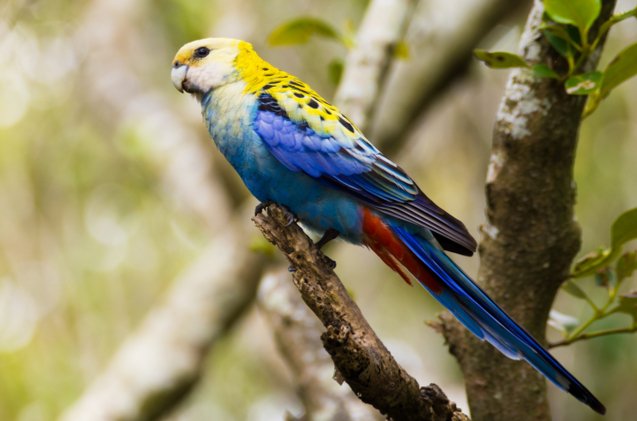Pale Headed Rosella


About Pale Headed Rosella
These lovely and unique birds are a common sight in many parts of the world. With their diverse and balanced traits, they make excellent pets and companion, especially once you get to know them. They are not only beautiful and charismatic but hardy and easy to look after as well. Slightly less popular than their cousin Crimson Rosella, they are nonetheless a loved pet in Europe and Australia. Let’s learn more about them!
For every owner that is looking for a lively bird with a great personality, Pale Headed Rosella might be the right choice.
Native Region/Natural Habitat
Native to Australia, these parrots live in a moderate region in the north and eastern coastal areas. They are found from Cape York, central Queensland, and New South Wales. Thriving mostly in grasslands, sparse woodlands, and scrub orchards and roadsides, the Pale Headed Rosella adapted to various climates and settings. This brought on their hardy health. Together with Crimson rosellas, they are one of Australia’s most popular parrot species.
The small family of Rosellas, known as Platycerus, shares a set of similarities in their physical appearance. Their small beak and head give a very cute appearance and they share the iconic broad tail. The adults reach an average length of 12 inches (30 centimeters) and can weigh around 4 ounces (120 grams). Their tail is 6 inches (15 centimeters) long on average, taking up half of the overall size. These are light and slender birds, and they have a lot of energy. Provide a spacious cage for your Pale Headed Rosella and ensure they get to fly around your parrot-proofed home, as well.
The species is known for their talent as whistlers. They are capable of memorizing a variety of simple tunes, repeating them in a skilled and melodic tone. The natural calls of Pale Headed Rosella are shrill and high pitched tweets, repeated moderately through the day. Although their singing is praised and often pleasant, it might make them less suitable for an apartment setting.
The variety of details and unique patterns gives these parrots a truly mesmerizing appearance. It’s not often that we see so many different little details on a bird of this size, and it really makes them unique on every level. The head, chest, and belly are almost entirely white, with slight tones of very pale blue. The tail and primary flight feathers are dark blue, while the back and top of the wings are black, bordered with thick yellow edges. This creates a unique pattern that gives them a scaly appearance. The rump is red. All these colors and details combined make a whirlwind of details, especially in flight. The Pale Headed Rosella is charming without a doubt.
The only difference between the sexes is the size – females are slightly smaller.
One of the most important needs of the Pale Headed Rosella is space. Birds that are cramped in small cages can develop a myriad of problems and easily get sick. To remedy this, consider purchasing a cage that is spacious in comparison to the size of a Pale Headed Rosella. You can also put them in an aviary. Just keep in mind that they can be a bit territorial, especially during breeding season. Housing them with other breeds of Rosellas might not be the best choice. For a successful and balanced diet, not much is needed. The basic small seed mix with oats, millet and sunflower seeds, will be a good start. Supplement it with fruit, and plenty of green veggies.
One of the things that led to the popularity of the Pale Headed Rosella in aviculture is their hardy health. They can live out a lifespan of around 15 or more years without any issues along the way. With all of their needs met and the housing conditions at an optimal level, you will find that these parrots are really adaptable and strong. Always remember to provide a lot of social interaction, to keep your pet mentally stimulated and people-friendly.
Pale Headed Rosella can be territorial. Consider keeping them as single pets.
For every owner that is looking for a lively bird with a great personality, Pale Headed Rosella might be the right choice. Their varied traits ensure you’re never bored with your parrot and their whistling song can help brighten your day. You will also love their playful side – provide a lot of perches, ropes and parrot toys and enjoy seeing them goof around. When you combine their looks, song, and behavior, you’ll quickly see why the Pale Headed Rosella is such a cherished pet parrot.

A proud mama to seven dogs and ten cats, Angela spends her days writing for her fellow pet parents and pampering her furballs, all of whom are rescues. When she's not gushing over her adorable cats or playing with her dogs, she can be found curled up with a good fantasy book.
More by Angela Vuckovic

























